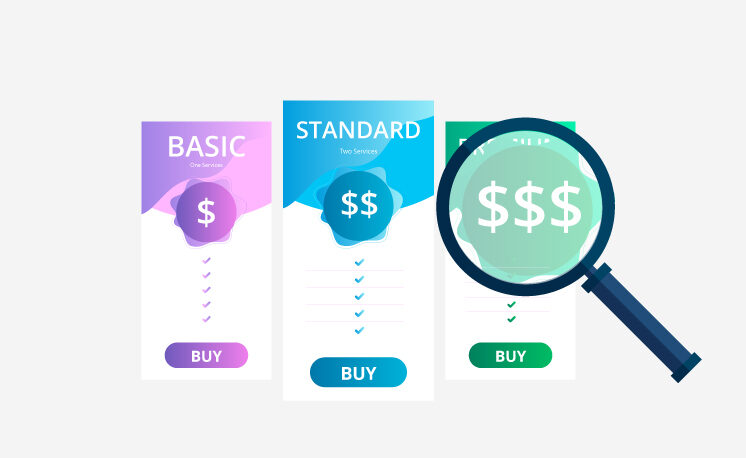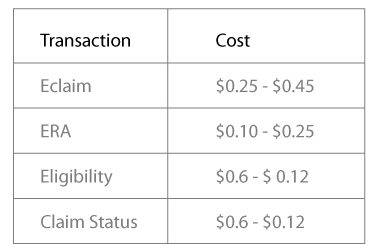
5 Basic Keywords Used On Pricing Sheets By Medical Billing Companies
5 keywords normally found on pretty much all the Medical Billing and Practice Management Software pricing sheets, and what do these keywords imply? This blog will help simplify the pricing sheets for you.
You are using a Medical Billing Software or thinking of getting one for your company but are unsure about the choice? There are so many options out there and each of them present you with complex pricing sheets. These sheets are layered with industry specific medical billing keywords, increasing the confusion hence delaying the purchase decision. When you do get ready to make a purchase, the price definitely influence the selection, after all, cost impacts 80% of buying decision.
Let’s decode these Medical Billing keywords and their implication here.
Account Setup Cost /Setup Per Tax Id cost
The account setup fee is the fee for establishing/creating your billing company’s account on the software vendor’s system. The setup cost per tax id is the cost charged by the billing software company when you set up your medical practice client onto the software.
What does this mean?
The billing software companies usually charge this fee. This basically is the cost for the billing software company’s resources usage when they set you on their system as a new client, and when they help you add a medical practice client under your account.
Typical Cost:
This charge can be anywhere from $99 to $199. There is normally a relatively smaller charge ($0 to $99) every time you would add another client/practice (tax id).
Alternate Option:
The billing software companies have always charged this sort of fees, but more recently many vendors are waiving off this fee to capture new clients. You must always ask the vendor to waive these fees as more vendors are letting go of these fees to win over new clients.
Cost/User
This is the pricing model in which the billing software company will charge you for every user that you create on their system.
What does this mean?
This means that you will have to continuously keep track of all the users that you create on the software to control the cost. This would also impact how would you chose to get your practices’ billing work distributed across your team. If you are the only biller than you may be fine by getting just one user on the system, but as you scale, and hire more resources, this cost would go up.
In such a model, the EDI transactions cost is always charged separately either per transaction (Per Transaction model discussed below) or as a package (Per NPI/Provider as discussed below)
Cost:
Typically, this per user cost ranges anywhere from $49 to $149 per user.
Alternate Options:
The alternate option is that of unlimited users. In this model, you can create as many users as you want. This normally will always be a better model for you as this affords you the flexibility of distributing the clients’ work in different permutations across your team, resulting in better productivity. It will also help you predict your cost better.
Cost Per NPI/Cost Per Provider
This cost represents the pricing model in which the billing software company will charge you a fixed monthly cost for each Provider/NPI. This also represents a “Package” price.
What does this mean?
The idea here is that the software vendor packages their license cost as well as the EDI costs (Electronic claims, ERAs) into one monthly fixed cost, and sells you this package for every Provider whose claims would be submitted through the software.
You must pay special attention to the fact what elements of the EDI are covered in this cost. Most of the time the vendor will only allow the electronic claims, and the ERAs in this sort of package.
Cost:
Typically, this per NPI/Provider cost ranges anywhere from $199 to $349 per user. The vendor sets this price by estimating how many encounters can a typical provider manage in a month and figuring out its cost for the allowed EDI transactions for those many claims.
Alternate Options:
The alternate option here is a “Volume based” price. This would be discussed under the Cost Per Transaction model.
Cost per Transaction
This cost represents the pricing model in which the billing software company will charge you a fee for every EDI Transaction that you initiate. This also represents a “Package” price. The typical transactions are Eclaims, ERAs, Claim Status, Eligibility Check.
What does this mean?
The idea here is that the software vendor charges you for all the transactions that you avail. It is a good model if you are unsure of the volume of the claims you would be handling. One additional auditing that you would have to do would be to analyze the transactions done against the monthly invoice. You must always also look closely as to if the Eclaim and the corresponding ERA is considered one transaction or separate.
You must always reanalyze as to if a packaged cost would make more sense at any given time of your engagement.
Cost:

Alternate Options:
The alternate option here is a “Package” price, which was discussed under the “Per NPI/Provider”.
Cost Per Additional Provider
Most of the vendors normally add this charge to increase their bottom-line. This charge means that there will be a monthly charge for every provider beyond the first one whose claims will be processed through the account.
What does this mean?
This means that if your practice has more than on rendering provider, a separate fixed fee will be charged for every provider. If you are opting for a fixed cost per NPI model, this cost will not be relevant, but this typically almost is charged when you opt for a per transaction/volume-based model. Practices with higher number of providers can end up accruing big monthly recurring fee.
Cost:
Typically, this additional provider cost ranges anywhere from $29 to $99 per additional provider.
Alternate Options:
If you choose a Transaction based pricing model, this fee is pretty much always charged by the vendor. If you are in such a situation, you must negotiate not only the charge per additional provider, but also negotiate to reduce this cost even lower for providers rendering low number of monthly claims.
When going through the pricing sheets for medical billing software, one should always look for the Software, that has a predictive and transparent pricing model. It should not have hidden costs or conditions just to charge the biller extra money. It should be able to provide value as that of a core Medical Billing Software; reduce manual work and redundant steps, enhance productivity, and provide excellent reports. At the end of the day, it should be leaving you stress free with higher profits and a justified pricing plan.
AltuMED PracticeFit comes with a simple and transparent pricing plan. Our experts are available 24/7 to guide in case any confusion occurs. Kindly Contact us
Subscribe to Our Newsletter!
Subscribe to Our Newsletter!
Enter Your Email Address. We Promise We Won't Spam You
